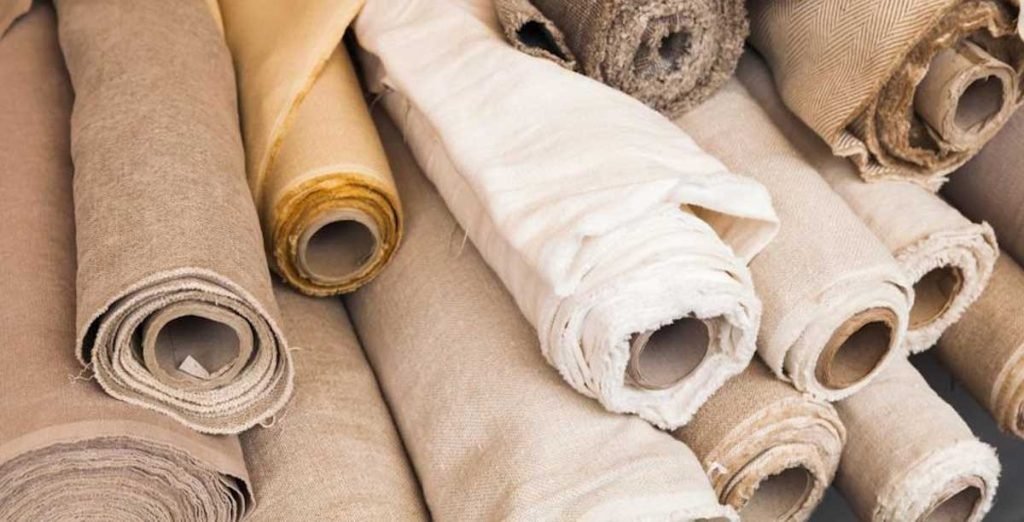The fashion industry and textile production are some of the most significant contributors to pollution. Not just because we throw so many clothes away, but because the entire production process is highly flawed.
Textile production impacts everything from greenhouse emissions, rainforest destruction to microplastic pollution and evergrowing landfills.
That’s why many industry pioneers are on the constant lookout for innovations and ways to produce sustainable fabrics.
But there’s so much information that it might get challenging to understand which fabrics are sustainable. We’re taking a closer look.
Textile production and sustainability
When it comes to textile production, it includes a few main steps: raw material, production, chemicals used, and what happens to textiles at the end of their use.
Raw materials are everything from cotton to wool to nylon, and their extraction impacts our nature and fossil fuel consumption.
Production includes energy, water, production waste, and how the producer treats their workers.
Chemicals used in production affect not just nature but the health of workers and the user, so we all pay the price if they’re harmful. For example, chlorine is not used in bleaching anymore as it creates halogenated organic substances that are carcinogenic.
Lastly, textile biodegradability or the possibility to give it a second life also affects the sustainability aspect.
Steps towards sustainability
The industry focuses on a few steps that should help fashion and textile production be more sustainable. Here are a few.
Prevent. It means preventing harmful practices and giving up toxic and non-sustainable processes for the environment’s sake.
Decrease. This means cutting down on the use of polluting materials, dyes, etc., as well as reducing energy and water use.
Recycle. Our landfills are growing by the hour due to massive amounts of textiles that get thrown out. Finding and using technologies to recycle both natural and synthetic fibers is one of the main goals of sustainability. There’s still a long way to go for recycling synthetics, though.
When it comes to consumers, one of the ways they can reduce their impact is to buy high-quality pieces and refuse fast fashion.
For example, getting high-quality eco-friendly t-shirts by Fresh Clean Tees will give you a product you’ll wear for a long time.
Sustainable textiles
Wondering which textiles are sustainable? Here’s a short guide to help you make educated decisions and choices.
Organic Cotton
No toxic pesticides, fertilizers, or genetically modified seeds are used in the production of organic cotton. The entire process is also sustainable, and it’s pretty easy to spot clothes made from this fabric due to certifications issued.
Reclaimed fabric
Reclaimed fabric is leftover fabric from manufacturers or old second-hand fabric used to make new clothing and accessories. It’s often called deadstock.
Bamboo
Bamboo is a great fabric that many sustainable clothing brands use as it’s regenerative and doesn’t require fertilization (hence no toxic chemicals).
Hemp
Hemp is another excellent choice as it doesn’t need pesticides, is fast-growing, doesn’t harm the soil, and has many uses. Hemp fabric is a great cotton alternative as it’s breathable and comfortable. Make sure to choose 100% hemp, though.
Linen
Linen is one of the best fabrics for the summer and is a sustainable textile (made from flax) that doesn’t require fertilizer to produce. Flax has many uses, so there’s no production waste, and it is biodegradable too.
Wool
If produced fairly, wool is sustainable because it’s natural, compostable, and doesn’t produce waste like plastic microfibers. However, it’s vital to choose wool from sustainable producers to reduce animal abuse in the industry.
Modal and Tencel™ lyocell
Modal is made from wood pulp, so it’s something between synthetic and natural fabrics, just like Tencel™ lyocell. Why specifically Tencel™? Because it uses sustainable practices and responsible sourcing.
Recycled polyester
One of the fantastic results of recycling plastic bottles is the recycled polyester that comes from them. This fabric has a long life span as it can be recycled many times and is an excellent alternative to natural fabrics, especially when those are not suitable for certain clothes (e.g., stretchy garments).
Silk
Silk is made by silkworms and is a very low-waste option. As with all animal-made products, choosing only brands that ensure ethical production is essential.

